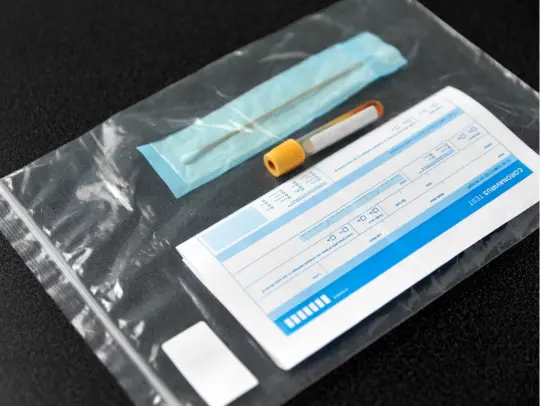
Understanding the Vagina: Anatomy, Function, and Sexual Health
Female Anatomy Guide: Vagina Structure, Function & Sexual Wellness
The vagina, a fundamental component of the female reproductive system, is an intricately designed organ serving multiple vital functions including sexual activity, menstruation, and childbirth. Far more than just a reproductive structure, it plays a crucial role in sexual pleasure and overall well-being. This remarkable organ represents a perfect balance of form and function, adapting to various physiological needs throughout a woman's life.
Despite its importance, many people lack comprehensive understanding of vaginal anatomy and function. Cultural taboos, inadequate education, and medical misinformation have contributed to a knowledge gap that affects sexual health outcomes and personal confidence. This article aims to bridge that gap with evidence-based information.
Why Vaginal Anatomy Knowledge Matters
Understanding vaginal anatomy empowers women with essential knowledge about their bodies, promoting autonomy and confidence—particularly important in a society where female reproductive health discussions are often clouded by misinformation or treated as taboo. This self-awareness allows women to take control of their health decisions and develop a positive relationship with their bodies.
Historical perspectives on female anatomy have been fraught with misconceptions. For centuries, women's bodies were poorly understood and often misrepresented in medical literature. Even today, many educational systems provide inadequate information about female reproductive anatomy. This historical context makes contemporary understanding all the more valuable and necessary.
Additionally, comprehensive understanding of vaginal anatomy can significantly enhance sexual health and pleasure. Knowing the various parts and their functions enables individuals to explore their desires more confidently and communicate needs effectively with partners, fostering healthier physical and emotional sexual relationships. This knowledge forms the foundation for a fulfilling sexual life and contributes to overall wellbeing.
The Intricate Anatomy of the Vagina
The vagina is part of a complex reproductive system that includes both internal and external structures. While often mistakenly used to refer to the entire female genital area, the term "vagina" specifically denotes the muscular canal connecting the external genitalia to the cervix. Let's explore this remarkable structure in detail.
Vaginal Canal
The vaginal canal is a muscular tube extending from the cervix to the vulva, typically measuring between 3 to 6 inches (7.5 to 15 cm) in length, though this varies considerably among individuals. Its remarkable flexibility allows it to accommodate sexual intercourse, menstrual flow, and childbirth. The canal is not straight but curves slightly backward toward the lower spine, an important anatomical feature to understand for comfortable intercourse and tampon insertion.
The interior texture of the vaginal canal is characterized by ridges called rugae, which provide both elasticity and increased surface area. These rugae enable the vagina to expand significantly during childbirth and provide friction during sexual intercourse, enhancing sensation for both partners. The moistness of the vaginal canal is maintained by natural secretions from the cervix and transudate from blood vessels, creating an environment that is both self-cleaning and self-regulating.
The G-spot
The Gräfenberg spot (G-spot), named after German gynecologist Ernst Gräfenberg, is located on the anterior wall of the vagina, approximately 1-3 inches (2.5-7.5 cm) inside the vaginal opening. While its existence and exact location vary among individuals, stimulation of this area can produce intense sexual pleasure for many women. Physiologically, the G-spot is thought to be an extension of the clitoral network and is particularly sensitive due to its proximity to the urethral sponge.
Scientific debate continues regarding the exact nature of the G-spot, with some research suggesting it might be better understood as part of a larger pleasure zone rather than a distinct anatomical structure. Regardless of the ongoing academic discussion, many women report heightened arousal and sometimes ejaculation when this area receives adequate stimulation, making it an important consideration in sexual exploration.
Vaginal Walls
The vagina's walls comprise several distinct layers—including mucous membrane, muscular tissue, and fibrous tissue—providing essential elasticity and strength during intercourse and childbirth. The innermost mucosal layer is constantly regenerating and changing throughout the menstrual cycle in response to hormonal fluctuations. This layer contains few nerve endings, which is why many women do not find deep penetration alone sufficient for sexual pleasure.
The middle muscular layer consists primarily of smooth muscle tissue arranged in circular and longitudinal patterns. This arrangement allows the vagina to expand and contract, contributing to its remarkable adaptability. The outermost fibrous layer contains blood vessels, lymphatic vessels, and connective tissue that supports the structure and provides resources for vaginal health and function.
The vaginal ecosystem is maintained by a delicate balance of beneficial bacteria, primarily lactobacilli, which produce lactic acid and maintain an acidic environment (pH of approximately 3.8-4.5) that protects against infections. This microbiome changes throughout a woman's life, influenced by hormones, sexual activity, hygiene practices, and health conditions.
Bartholin's Glands
Situated at each side of the vaginal opening, these specialized pea-sized glands secrete a clear fluid that lubricates the vagina, facilitating comfortable sexual intercourse. The Bartholin's glands remain relatively small and unnoticeable unless they become infected or blocked, causing a condition known as a Bartholin's cyst. During sexual arousal, these glands increase their secretions, contributing to the natural lubrication that makes intercourse comfortable and pleasurable.
These secretions not only reduce friction during intercourse but also contribute to the vagina's defense mechanisms against potential pathogens. The fluid contains antimicrobial properties that help maintain vaginal health. Additionally, the moisture provided by these glands creates an optimal environment for sperm survival, playing a subtle but important role in reproductive function.
Cervix
Located at the lower part of the uterus and extending into the vagina, the cervix forms the gateway between these two structures. Typically about 1 inch (2.5 cm) long, the cervix contains a small opening called the os, which allows menstrual blood to flow out and can dilate up to 10 cm during childbirth. The cervix may become more engorged during sexual arousal, increasing pleasure for some individuals while potentially causing discomfort if contacted forcefully during deep penetration.
The cervix undergoes cyclical changes throughout the menstrual cycle, altering its position, firmness, and the consistency of its mucus. These changes can be observed and used as indicators of fertility in natural family planning methods. During ovulation, the cervix produces thin, stretchy mucus conducive to sperm movement, while at other times, it produces thicker mucus that acts as a barrier. Understanding these cyclical changes can provide valuable insights into reproductive health and fertility awareness.
How Anatomical Knowledge Enhances Sexual Experience
Improved Communication
Understanding vaginal anatomy facilitates better communication with partners. Being able to articulate what feels good and understanding why leads to more satisfying sexual experiences and helps in discussing any discomfort that may arise. This improved dialogue creates a foundation of trust and mutual respect, essential elements in any intimate relationship.
The vocabulary gained through anatomical knowledge provides precision in communication that can transform sexual experiences. Rather than vague directions or uncomfortable silence, partners can express specific preferences and boundaries. This clarity reduces misunderstandings and fosters an environment where both partners can feel heard and valued, ultimately strengthening the relationship beyond the bedroom.
Enhanced Pleasure
Knowing which parts of the vagina are most sensitive can significantly enhance sexual pleasure. Awareness of structures like the G-spot, clitoral complex, and sensitive areas of the vaginal opening opens new avenues for sexual exploration and fulfillment. This knowledge challenges the misconception that vaginal sensitivity is uniform and encourages exploration of various techniques and approaches to stimulation.
Research indicates that women who understand their anatomy are more likely to experience orgasms during sexual activity. This correlation highlights how educational empowerment translates directly to physical pleasure. By understanding the interconnected nature of vaginal structures and their relationship to arousal, individuals can develop a more nuanced approach to sexual pleasure that goes beyond conventional techniques.
Better Sexual Health
Anatomical knowledge is crucial for recognizing normal functions and identifying potential health issues. This awareness enables early detection and treatment of conditions like infections, abnormal discharge, or dyspareunia (painful intercourse). Recognizing what constitutes "normal" appearance, odor, and sensation allows individuals to promptly identify changes that might indicate health concerns.
Furthermore, understanding vaginal anatomy improves adherence to preventive health measures. Women familiar with their bodies are more likely to perform self-examinations, recognize the importance of regular gynecological check-ups, and follow recommended screening guidelines. This proactive approach to health can lead to earlier intervention for conditions like cervical cancer, significantly improving outcomes and quality of life.
Increased Confidence and Comfort
Understanding one's body naturally increases confidence during sexual activities. This self-assurance makes experiences more enjoyable while helping individuals feel more comfortable and relaxed—essential components for pleasure and satisfaction. Body confidence extends beyond the bedroom, positively influencing overall self-image and psychological wellbeing.
For many women, anatomical education resolves feelings of shame or embarrassment about normal bodily functions. Learning that vaginal discharge, odor variations, and physical appearance differ widely among individuals can alleviate unnecessary concerns about "normality." This acceptance fosters a healthier relationship with one's body, allowing for greater sexual freedom and enjoyment.
Empowerment and Autonomy
Knowledge about one's body empowers individuals to make informed decisions regarding sexual health, including choices about sexual activities, contraception, and when to seek medical care. This autonomy is particularly important in navigating complex healthcare systems where women's concerns are sometimes minimized or dismissed. Anatomical understanding provides the confidence to advocate for appropriate care and treatment.
Historical and contemporary biases in medical research have sometimes led to knowledge gaps regarding female anatomy and health concerns. By actively educating themselves, women can bridge these gaps and participate more fully in their healthcare decisions. This empowerment represents a significant shift from traditional approaches where women's bodies were often treated as mysterious or problematic rather than normal and functional.
Reduced Anxiety
Familiarity with one's body can alleviate fears and anxieties related to sex, particularly beneficial for those with limited sexual experience or who have internalized negative messages about their sexuality. Many anxieties stem from misconceptions about what is "normal" in terms of appearance, response, or function. Accurate information dispels these myths, replacing fear with understanding.
For those recovering from sexual trauma or negative experiences, anatomical education can be part of the healing journey. Reclaiming knowledge of one's body can restore a sense of ownership and control that may have been compromised. While this education is not a substitute for professional support, it can complement therapeutic approaches to sexual healing and recovery.
Enhanced Intimacy
Sharing anatomical knowledge can deepen intimacy between partners, fostering understanding and appreciation of each other's bodies and leading to more connected and empathetic sexual relationships. When both partners understand vaginal anatomy, they can collaboratively explore techniques and approaches that maximize mutual pleasure and comfort.
This shared knowledge transforms sexual encounters from potentially awkward or unsatisfying experiences to opportunities for meaningful connection. Partners who can openly discuss anatomy and preferences demonstrate respect for each other's pleasure and boundaries, building trust that enhances both physical and emotional intimacy.
Conclusion
The intricate anatomy of the vagina extends far beyond medical interest—it's a cornerstone in understanding female sexuality and health. Comprehensive knowledge unlocks numerous benefits from enhanced pleasure and improved health to greater confidence and deeper intimacy in relationships. The journey toward this understanding represents both personal empowerment and societal progress.
This knowledge encourages open, informed conversations about sexual needs and health, fostering a culture of respect and understanding around female sexuality. Moreover, it helps dispel myths and misconceptions that often surround female reproductive health, contributing to a more enlightened society where women's bodies are neither mystified nor stigmatized.
Medical understanding of vaginal anatomy continues to evolve, with research revealing new insights about this remarkable organ. Contemporary science recognizes the complexity of female sexual response and the intricate relationships between physical structures, emotional experiences, and overall wellbeing. This evolving knowledge base promises even greater understanding in the future.
By embracing education about the complexities and wonders of the vagina, we not only enhance individual sexual experiences but also contribute to the broader narrative of women's health and empowerment. This journey of discovery represents a vital step toward a healthier, more fulfilling, and respectful approach to female sexuality—one that recognizes and celebrates the remarkable design and function of the vagina in all aspects of women's lives.


.jpg)

































































































































